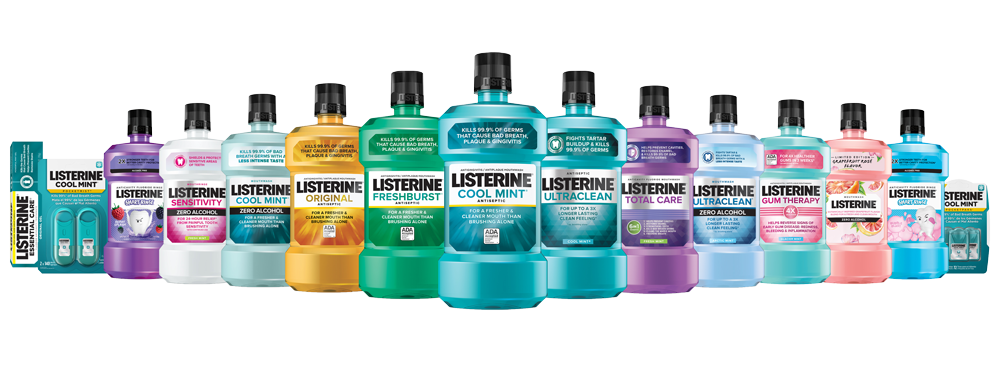

Licensed professionals can receive the latest Listerine clinical information and patient resources.

YOU ALREADY KNOW HOW IMPORTANT IT IS TO MAINTAIN A HEALTHY ORAL MICROBIOME.
But did you know that LISTERINE® Antiseptic can play a role in cultivating a healthy equilibrium among microorganisms in the oral cavity? Don’t discount the part twice daily rinsing can play in helping your patients sustain balanced oral health!

MICROBIAL COMMUNITIES IN THE MOUTH
One of the most diverse microbial communities in the body is found in the oral cavity, which offers many distinctive habitats for colonization (teeth, tongue, gingiva, etc.). Hundreds of bacterial species – and billions of individual bacteria- live in the human mouth.1-3 Control of dental plaque biofilm is therefore essential to the maintenance of oral health.4
A complex equilibrium among microbial species helps maintain a healthy state (eubiosis) in the oral cavity. But biological changes in the body (such as pregnancy), certain diseases (such as rheumatoid arthritis), and factors that can be modified (such as diet and glycemic control, smoking, and the use of antibiotics) may increase the risk of oral diseases (dysbiosis).5
ACCUMULATION OF BIOFILM THREATENS EUBIOSIS
Communities of microorganisms may adhere to one another and to surfaces, forming a biofilm –a complex, highly organized, 3-dimensional microbial colony enclosed in, and protected by, an extracellular matrix. In the mouth, changes in the composition of biofilm may cause unhealthy imbalances. For example, when large quantities of microbes accumulate as dental plaque biofilm and are not disrupted or removed, dysbiosis may occur.5
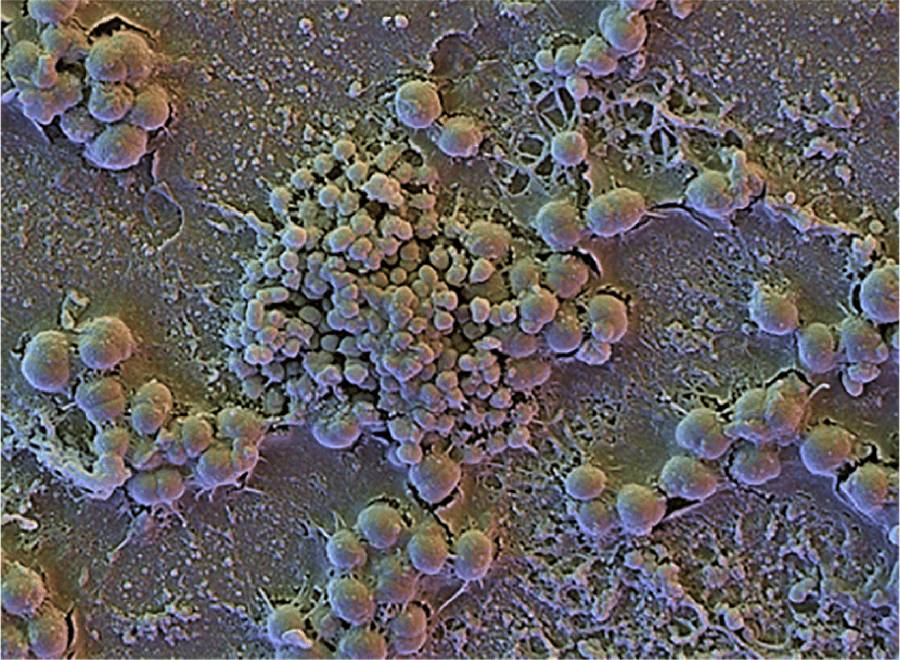
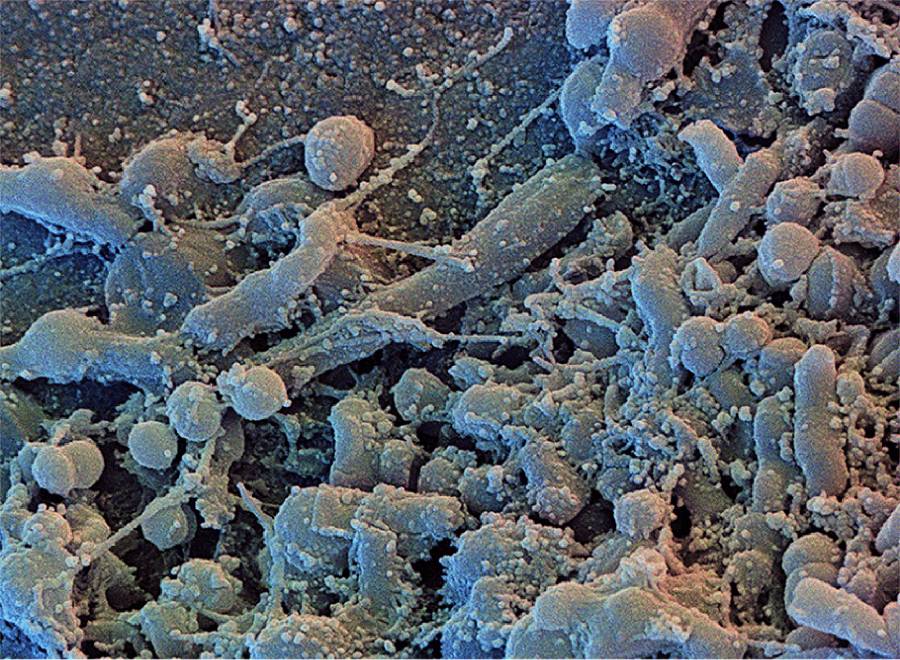
CHANGES WITHIN BIOLFIM MAY DRIVE DYSBIOSIS
The makeup of a biofilm’s microbial population does not remain stable over time. Plaque biofilm colonies initially consist of gram-positive organisms. If left undisturbed, the biofilm eventually become more complex and shifts to a predominantly gram-negative mix.4 In addition, changes in the local environment within the mouth select for organisms that are more tolerant of that environment, which in turn may drive further change. For example, increased frequency of sugar intake or reduced flow of saliva exposes biofilms to a more acidic environment, in which acid-tolerant or acid-producing organisms thrive and populations of organisms that prefer neutral pH may struggle, which may result in dysbiosis.5
DYSBIOSIS MAY LEAD TO DISEASE
Plaque biofilm may contain pathogens that interfere with the immune system. In a dysbiotic environment, these may lead to gingivitis and periodontitis.5
CONTROLLING PLAQUE BIOFILM TO PROMOTE HEALTH
Strategies for prevention and treatment of periodontal diseases include both mechanical and chemotherapeutic methods. Good oral hygiene, including regular brushing and flossing, are required to effectively disrupt and remove plaque biofilm. LISTERINE® Antiseptic aids in whole mouth plaque control by penetrating the biofilm’s extracellular matrix and killing pathogenic bacteria, helping to keep the biofilm healthy.5
LISTERINE ® ANTISEPTIC HAS EARNED
THE ADA SEAL OF ACCEPTANCE

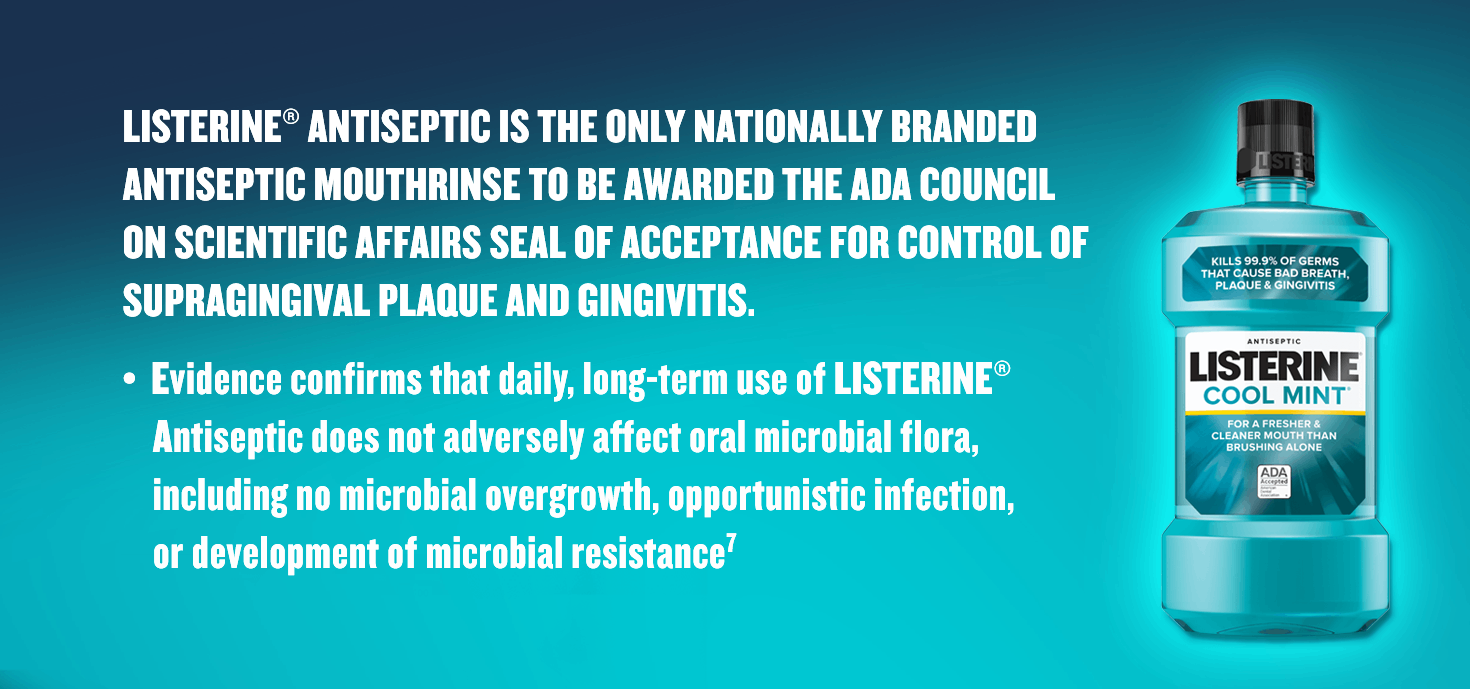
EDUCATING YOUR PATIENTS
It is important that patients understand the concept of maintaining the healthy balance in their mouths, including the impact poor oral hygiene, and smoking may have on plaque biofilms.5 Patients also need to understand that periodontal disease results from accumulation of plaque biofilm.2
Help your patients understand that there are more ways to control plaque and gingivitis than mechanically removing plaque by brushing and flossing. Consider recommending an essential oil antimicrobial mouthrinse to improve their opportunity to control plaque between office visits.
References: 1. Dewhirst FE, Chen T, Izard J, et al. The human microbiome. J Bacteriol. 2010; 192(19): 5002-5017.2. Chen, T, Yu W-H Izard J. Baranova OV Lakshamanan A Dewhirst FE, The Human Oral Microbiome Database: a web accessible resource for investigating oral microbe taxonomic and genomic information. Database Vol. 2010, Article ID baq013, doi: 10.1093/database/baq013. Online Open Access 3. Kumar PS. From focal sepsis to periodontal medicine: a century of exploring the role of the oral microbiome in system disease. J Physiol. 2017; 595(2) 465-476. 4. Gurenlian JR. The role of dental biofilm in oral health. J Dent Hyg. 2007; Special supplement: 4-12. 5. Killian M, Chapple ILC, Hannig M, et al. The oral microbiome—an update for oral healthcare professionals. Br Dent J. 2016;221(10):657-666. 6. Marsh PD, Martin MV, Lewis MAO, Williams DW. Dental plaque. Oral Microbiology E-Book, Fifth edition. London: Churchill Livingstone; 2009:74-102. 7. DePaola LG, Spolarich AE. Safety and efficacy of antimicrobial mouthrinses in clinical practice. J Dent Hyg. 2007; Special supplement: 13-25


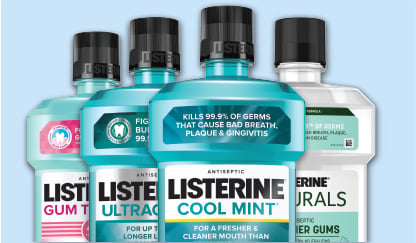
All Fields required, unless otherwise indicated
Personal Information
Step 1
Will be used as your user name
By submitting your information above, you agree that the information you provide will be governed by our site's Privacy Policy.